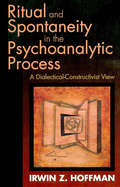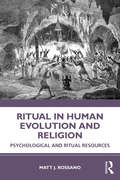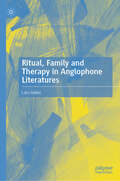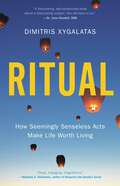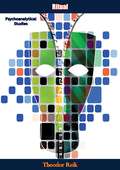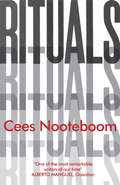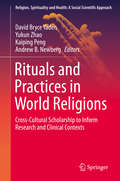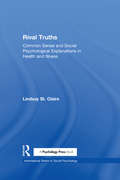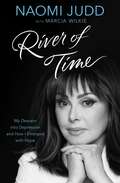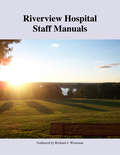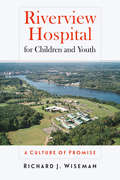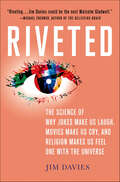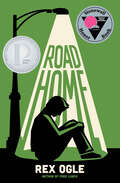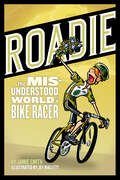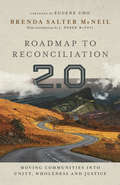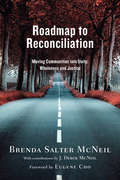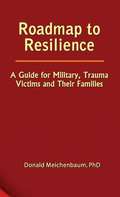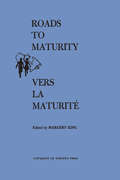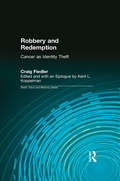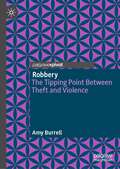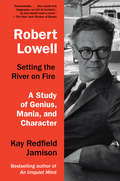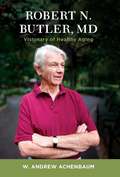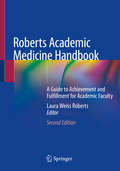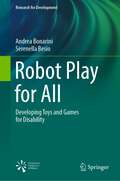- Table View
- List View
Ritual and Spontaneity in the Psychoanalytic Process: A Dialectical-Constructivist View
by Irwin Z. HoffmanThe psychoanalytic process is characterized by a complex weave of interrelated polarities: transference and countertransference, repetition and new experience, enactment and interpretation, discipline and personal responsiveness, the intrapsychic and the interpersonal, construction and discovery. In Ritual and Spontaneity in the Psychoanalytic Process, Irwin Z. Hoffman, through compelling clinical accounts, demonstrates the great therapeutic potential that resides in the analyst's struggle to achieve a balance within each of these dialectics. According to Hoffman, the psychoanalytic modality implicates a dialectic tension between interpersonal influence and interpretive exploration, a tension in which noninterpretive and interpretive interactions continuously elicit one another. It follows that Hoffman's "dialectical constructivism" highlights the intrinsic ambiguity of experience, an ambiguity that coexists with the irrefutable facts of a person's life, including the fact of mortality. The analytic situation promotes awareness of the freedom to shape one's life story within the constraints of given realities. Hoffman deems it a special kind of crucible for the affirmation of worth and the construction of meaning in a highly uncertain world. The analyst, in turn, emerges as a moral influence with an ironic kind of authority, one that is enhanced by the ritualized aspects of the analytic process even as it is subjected to critical scrutiny. An intensely clinical work, Ritual and Spontaneity in the Psychoanalytic Process forges a new understanding of the curative possibilities that grow out of the tensions, the choices, and the constraints inhering in the intimate encounter of a psychoanalyst and a patient. Compelling reading for all analysts and analytic therapists, it will also be powerfully informative for scholars in the social sciences and the humanities.
Ritual in Human Evolution and Religion: Psychological and Ritual Resources
by Matt J. RossanoThis book explores the role of ritual in social life, human evolution, and religion. It explains the functions and purpose of varied rituals across the world by arguing they are mechanisms of ‘resource management’, providing a descriptive tool for understanding rituals and generating predictions about ritual survival. By showing how rituals have resulted from the need to cultivate social resources necessary to sustain cooperative groups, Rossano presents a unique examination of the function of rituals and how they cultivate, mobilize, and direct psychological resources. Rossano examines rituals from a diverse range of historical contexts, including the Greco-Romans, Soviet Russians, and those in ‘crisis cults’. The book shows how rituals address societal and community problems by cultivating three psychological resources – commitment to communal values, goodwill (both of humans and supernatural agents) and social support or social capital. Holding communities together in the face of threat, disaster, or apathy is one of ritual’s primary functions, and the author describes how our ancestors used ritual to become the highly social, inter-dependent primate that is Homo sapiens. Including examples from all over the world and providing detailed descriptions of both past and current ritual practices, this is fascinating reading for students and academics in psychology, sociology, religion, anthropology, and sociology.
Ritual, Family and Therapy in Anglophone Literatures
by Lars HeilerThis book investigates the triadic constellations between ritual, family, and therapy in literature in English. Many rituals, so-called rites of passage in particular, are strongly associated with the changing status of individuals as members of a family unit. Traditional healing rituals were often designed to have a therapeutic effect, sometimes mentally, but also physically, whereas modern psychotherapies often include ritual elements in order to enhance the efficacy of their treatment. Families, on the other hand, can be the site of therapeutic activity by providing protection, stability, and emotional comfort; yet, difficult family constellations may also be the origin of emotional distress and the reason why a person needs counselling and therapeutic support in the first place. Modern therapies, such as family systems therapy, have expanded their range of interest and influence in order to look at the whole family unit, not just the symptomatic individual, as client. This study discusses nine literary texts—six novels, one literary memoir, and two plays—in which the three dimensions intersect and mutually influence each other.
Ritual: How Seemingly Senseless Acts Make Life Worth Living
by Dimitris XygalatasA pioneering anthropologist takes readers on a 'fascinating, well-researched' (Dr. Jane Goodall, DBE) journey through the rich tapestry of human ritual—showing how and why our most irrational behaviors are a key driver of our success." Ritual is one of the oldest, and certainly most enigmatic, threads in the history of human culture. It presents a profound paradox: people ascribe the utmost importance to their rituals, but few can explain why they are so important. Apparently pointless ceremonies pervade every documented society, from handshakes to hexes, hazings to parades. Before we ever learned to farm, we were gathering in giant stone temples to perform elaborate rites and ceremonies. And yet, though rituals exist in every culture and can persist nearly unchanged for centuries, their logic has remained a mystery—until now. In Ritual, pathfinding scientist Dimitris Xygalatas leads us on an enlightening tour through this shadowy realm of human behavior. Armed with cutting-edge technology and drawing on discoveries from a wide range of disciplines, he presents a powerful new perspective on our place in the world. In birthday parties and coronations, in silent prayer, in fire-walks and terrifying rites of passage, in all the bewildering variety of human life, Ritual reveals the deep and subtle mechanisms that bind us together.
Ritual: Psychoanalytical Studies
by Theodor Reik"In a work Freud characterized as "brilliant," the author, an acknowledged pioneer in the study of the psychology of religion, analyzes a variety of rituals—couvade, puberty rites, the prayers and religious customs of modern Jews - in order to reconstruct the nature of the original impulses from which ritual is derived. He applies psychoanalytic methods of investigation to some of the most highly valued products of civilization—a task Freud called a "scientific duty." Connecting the superstitious beliefs of prehistoric times with contemporary practices, Dr. Reik illuminates the significance of modern and ancient religion. The author's lively style, combined with his scholarly documentation, makes this a book that will appeal alike to psychiatrists, psychologists, and students of comparative religion"
Rituals
by Cees NooteboomIn Rituals, Amsterdam of the fifties, sixties and seventies is viewed from the perspective of the capricious Inni Wintrop. An unintentional suicide survivor, the unexpected gift of life returned lends him the curiousity, and impartiality, to survey others' lives and rountines. Inni's opposite, the one-eyed downhill skier Arnold Taads measures his life by the clock, while his disowned son Philip follows Japanese rituals which themselves seem to render his existence meaningless. A novel for those who seek to unravel our mysterious, apparently directionless lives...
Rituals and Practices in World Religions: Cross-Cultural Scholarship to Inform Research and Clinical Contexts (Religion, Spirituality and Health: A Social Scientific Approach #5)
by David Bryce Yaden Yukun Zhao Kaiping Peng Andrew B. NewbergThis book codifies, describes, and contextualizes group rituals and individual practices from world religious traditions. At the interface of religious studies, psychology, and medicine, it elucidates the cultural richness of practices and rituals from numerous world religions. The book begins by discussing the role that religious rituals and practices may play in the well-being of humans and the multi-dimensional cultural and psychological complexity of religious rituals and practices. It then discusses rituals and practices within a number of religions, including Christian, Islamic, Jewish, Buddhist, Taoist, Sikh, Hindu, Confucian, and other traditions. There is a need for a more inclusive collection of religious rituals and practices, as some practices are making headlines in contemporary society. Mindfulness is one of the fastest-growing psychological interventions in healthcare and Yoga is now practiced by tens of millions of people in the U.S.A. These practices have been examined in thousands of academic publications spanning neuroscience, psychology, medicine, sociology, and religious studies. While Mindfulness and Yoga have recently received widespread scientific and cultural attention, many rituals and practices from world religious traditions have remained underexplored in scholarly, scientific, and clinical contexts. This book brings more diverse rituals and practices into this academic discourse while providing a reference guide for clinicians and students of the topic.
Rival Reputations
by Van JacksonCharting the turbulent history of US-North Korean affairs from the 1960s through to 2010, Rival Reputations explores how past incidents and crises can be relied upon to help determine threat credibility and the willingness of an adversary to resort to violence. Using reputation as the framework, this book answers some of the most vexing questions regarding both US and North Korean foreign policy. These include how they have managed to evade war, why North Korea - a much weaker power - has not been deterred by superior American military power from repeated violent provocations against the United States and South Korea, and why US officials in every administration have rarely taken North Korean threats seriously. Van Jackson urges us to jettison the conventional view of North Korean threats and violence as part of a 'cycle' of provocation and instead to recognize them as part of a pattern of rivalry inherent in North Korea's foreign relations.
Rival Truths: Common Sense and Social Psychological Explanations in Health and Illness (International Series in Social Psychology)
by Lindsay St ClaireIt is common sense that our survival as individuals depends on the survival of our physical bodies. However, common sense has been medicalised. Terms such as 'road rage' and 'premenstrual syndrome' sound like medical problems and suggest that it is affected individuals, rather than experiences or circumstances that require treatment.Without denying their importance, Rival Truths challenges four basic common sense views of health and illness and offers rival social psychological explanations. The primacy of biological facts is challenged by looking at the effects of social psychological influences, such as those mediated by stress. The assumption that medical practices are scientific is challenged by evidence that they also reflect and recreate social constructions. The assumption that medical advances are the most effective way to combat disease is questioned as their success may rely on changes in beliefs or behaviour, and finally, critical analyses suggest that medical treatment can sometimes be to the disadvantage of patients.Lindsay St. Claire has helped to raise awareness that health problems might be caused by social arrangements, not biological dysfunction. Thus, social psychology might suggest new ways to enhance health status which do not depend on medical breakthroughs. This book will be of interest for health psychology students, medical students and anyone involved in caring professions.
River of Time: My Descent into Depression and How I Emerged with Hope
by Marcia Wilkie Naomi JuddNaomi Judd's life as a country music superstar has been nonstop success. But offstage, she has battled incredible adversity. Struggling through a childhood of harsh family secrets, the death of a young sibling, and absent emotional support, Naomi found herself reluctantly married and an expectant mother at age seventeen. Four years later, she was a single mom of two, who survived being beaten and raped, and was abandoned without any financial support and nowhere to turn in Hollywood, CA. Naomi has always been a survivor: She put herself through nursing school to support her young daughters, then took a courageous chance by moving to Nashville to pursue their fantastic dream of careers in country music. Her leap of faith paid off, and Naomi and her daughter Wynonna became The Judds, soon ranking with country music's biggest stars, selling more than 20 million records and winning six Grammys. At the height of the singing duo's popularity, Naomi was given three years to live after being diagnosed with the previously incurable Hepatitis C. Miraculously, she overcame that too and was pronounced completely cured five years later. But Naomi was still to face her most desperate fight yet. After finishing a tour with Wynonna in 2011, she began a three-year battle with Severe Treatment Resistant Depression and anxiety. She suffered through frustrating and dangerous roller-coaster effects with antidepressants and other drugs, often terrifying therapies and, at her absolute lowest points, thoughts of suicide. But Naomi persevered once again. RIVER OF TIME is her poignant message of hope to anyone whose life has been scarred by trauma.
Riverview Hospital Staff Manuals
by Richard J. WisemanThree staff manuals and handbooks from the formative years of the Riverview Hospital for Children and Youth, a groundbreaking psychiatric hospital in Middletown, Connecticut. Includes the ABCD Program, BLEU Handbook, and Sunburst Handbook. These archival materials provide detail that illuminates the treatment philosophy and methods employed by the hospital staff during the hospital's formative years.This ebook is being published as a companion to Riverview Hospital for Children and Youth: A Culture of Promise, by Richard J. Wiseman.
Riverview Hospital for Children and Youth: A Culture of Promise (The Driftless Connecticut Series)
by Richard J. WisemanA personal history of the groundbreaking children's mental health facility
Riveted: The Science of Why Jokes Make Us Laugh, Movies Make Us Cry, and Religion Makes Us Feel One with the Universe
by Jim DaviesWhy do some things pass under the radar of our attention, but other things capture our interest? Why do some religions catch on and others fade away? What makes a story, a movie, or a book riveting? Why do some people keep watching the news even though it makes them anxious?The past 20 years have seen a remarkable flourishing of scientific research into exactly these kinds of questions. Professor Jim Davies' fascinating and highly accessible book, Riveted, reveals the evolutionary underpinnings of why we find things compelling, from art to religion and from sports to superstition. Compelling things fit our minds like keys in the ignition, turning us on and keeping us running, and yet we are often unaware of what makes these "keys" fit. What we like and don't like is almost always determined by subconscious forces, and when we try to consciously predict our own preferences we're often wrong. In one study of speed dating, people were asked what kinds of partners they found attractive. When the results came back, the participants' answers before the exercise had no correlation with who they actually found attractive in person! We are beginning to understand just how much the brain makes our decisions for us: we are rewarded with a rush of pleasure when we detect patterns, as the brain thinks we've discovered something significant; the mind urges us to linger on the news channel or rubberneck an accident in case it might pick up important survival information; it even pushes us to pick up People magazine in order to find out about changes in the social structure.Drawing on work from philosophy, anthropology, religious studies, psychology, economics, computer science, and biology, Davies offers a comprehensive explanation to show that in spite of the differences between the many things that we find compelling, they have similar effects on our minds and brains.
Road Home
by Rex OgleA Printz Award Honor Book A Stonewall Book Award Honor Book An Amazon Best Book of the Year A Chicago Public Library Best of the Best Book of the Year Horn Book Fanfare Best Books of the Year A Kirkus Reviews Best Book of the Year A School Library Journal Best Book of the Year This final, essential chapter in Rex Ogle’s memoir trilogy recounts being forced from his home and living on the streets after his father discovered he was gay. When Rex was outed the summer after he graduated high school, his father gave him a choice: he could stay at home, find a girlfriend, and attend church twice a week, or he could be gay—and leave. Rex left, driving toward the only other gay man he knew and a toxic relationship that would ultimately leave him homeless and desperate on the streets of New Orleans. Here, Rex tells the story of his coming out and his father’s rejection of his identity, navigating abuse and survival on the streets. Road Home is a devastating and incandescent reflection on Rex’s hunger—for food, for love, and for a place to call home—completing the trilogy of memoirs that began with the award-winning Free Lunch.
Roadie: The Misunderstood World of a Bike Racer
by Smith Jamie"As an avid cyclist and amateur bike racer I feel like I can relate to every word in this book. It was so good that I bought two extra copies to give to my cyclist friends[.]"Veteran race announcer and long-time cycling enthusiast Jamie Smith sets out to explain the sport he loves and the roadies who live for it. Every seemingly neurotic tendency is explained and celebrated with humorous illustrations from nationally syndicated cartoonist Jef Mallett.This book is perfect for: Anyone who has ever known a roadieAnyone who has considered becoming a roadieAnyone who has walked away from a bike race completely puzzledFinally, a book to explain those people who roll out for a ride dressed in technicolored Lycra at the crack of dawn on Saturday, and return at sundown with a glow of satisfaction and even stronger tan lines. Whether interested onlooker or cycling aficionado, readers will find themselves laughing out loud as they revel in the roadie&’s world.
Roadmap to Reconciliation 2.0: Moving Communities into Unity, Wholeness and Justice
by Brenda Salter McNeilWe can see the injustice and inequality in our lives and in the world.Roadmap to Reconciliation 2.0
Roadmap to Reconciliation: Moving Communities into Unity, Wholeness and Justice
by Eugene Cho Brenda Salter McNeil J. Derek McNeilMissio Alliance Essential Reading List of 2015 We can see the injustice and inequality in our lives and in the world. We are ready to rise up. But how, exactly, do we do this? How does one reconcile? What we need is a clear sense of direction. Based on her extensive consulting experience with churches, colleges and organizations, Rev. Dr. Brenda Salter McNeil has created a roadmap to show us the way. She guides us through the common topics of discussion and past the bumpy social terrain and political boundaries that will arise. In these pages she voices her call to all believers: "It's time for the followers of Jesus to embark on the prophetic journey that leads to reconciliation and transformation around the world. Many of us may already be aware of the need for reconciliation in our own backyards. . . . We cannot ignore the plight of the people around us and as globalization continues its relentless march onward, we cannot turn a blind eye to the world at large either. We have to face the realities here at home and we must also embrace the stories of people all around the world." Each chapter lays out the next step in the journey. With reflection questions and exercises at the end of each chapter, it's ideal to read together with your church or organization. If you are ready to take the next step into unity, wholeness and justice, then this is the book for you.
Roadmap to Resilience: A Guide for Military, Trauma Victims and their Families
by Donald MeichenbaumIn 'Roadmap to Resilience', Dr. Meichenbaum discusses the differences between those who recover from trauma through resilience and those who must go through PTSD, for both military and civilian populations.
Roads to Maturity/Vers La Maturité: Proceedings of the Second Canadian Conference on Children/Déliberations de la second Conférence Canadienne de l'Enfance Montréal, October 31-November 4, 1965
by Margery KingThis volume contains the proceedings of the second Canadian Conference on Children which was held in Montreal in the autumn of 1965. It includes four papers given by Dr. Alva Myrdal, Dr. Alan Ross, Dr. M.S. Rabinovitch and Dr. C.E. Hendry, all well known for their attention to the problems of children growing up in the present world and concerned here to draw attention to those they see in Canada and elsewhere. A running commentary is supplied by Dr. Alan Thomas on the less formal side of the conference—the discussions that took place in groups after the speeches. The four papers and the commentary are printed in both English and French. Reverend Roger Guindon O.M.I. of the University of Ottawa provides the closing address, presented in a style which can be seen as an interesting new approach to the Canadian problem of bilingualism.
Robbery and Redemption: Cancer as Identity Theft (Death, Value and Meaning Series)
by Craig Fiedler Kent L KoppelmanFirst Published in 2017. This volume is a totally candid account about the facts and feelings surrounding the diagnosis of and battle against lung cancer—a battle the author waged with every ounce of his being. It has an enlightening quality because he shares how he transformed his previous knowledge of family dynamics, coping strategies, and empowerment into wisdom. He shares his journey of taking the knowledge from the Before Cancer phase of his life, “and like an alchemist, converting one raw material—his life and his diagnosis and battle—into an element quite unlike the original. Robbery and Redemption: Cancer as Identity Theft is chock-full of wisdom that has been learned the old fashioned, visceral way—from lived experience and keen reflection. This personal, upfront, “rubber-hit-the-road” treatise is a gift from the author to each reader. It is his wise interpretation of his own experiences of integrating values, problem solving, and coping strategies.
Robbery: The Tipping Point Between Theft and Violence
by Amy BurrellThis book brings together research on personal robbery from psychology, criminology, group dynamics, and youth justice, to provide a comprehensive resource on this crime type. Although robbery is a pressing issue affecting a very high volume of people, it has been under-researched in recent years. This book explores the motivations of offenders, methods of committing personal robbery and the group dynamics involved. The author discusses behavioural crime linkage as a method to help police forces identify serial offences, as well as how profiling has been used in robbery cases. The author concludes by summarising the policing tactics used to prevent and detect robbery, to show how understanding robbery can help in creating workable initiatives around this crime type.
Robert Lowell, Setting the River on Fire: A Study of Genius, Mania, and Character
by Kay Redfield JamisonIn this magisterial study of the relationship between illness and art, the best-selling author of An Unquiet Mind, Kay Redfield Jamison, brings an entirely fresh understanding to the work and life of Robert Lowell (1917-1977), whose intense, complex, and personal verse left a lasting mark on the English language and changed the public discourse about private matters.In his Pulitzer Prize-winning poetry, Robert Lowell put his manic-depressive illness (now known as bipolar disorder) into the public domain, creating a language for madness that was new and arresting. As Dr. Jamison brings her expertise in mood disorders to bear on Lowell’s story, she illuminates not only the relationships among mania, depression, and creativity but also the details of Lowell’s treatment and how illness and treatment influenced the great work that he produced (and often became its subject). Lowell’s New England roots, early breakdowns, marriages to three eminent writers, friendships with other poets such as Elizabeth Bishop, his many hospitalizations, his vivid presence as both a teacher and a maker of poems—Jamison gives us the poet’s life through a lens that focuses our understanding of his intense discipline, courage, and commitment to his art. Jamison had unprecedented access to Lowell’s medical records, as well as to previously unpublished drafts and fragments of poems, and she is the first biographer to have spoken with his daughter, Harriet Lowell. With this new material and a psychologist’s deep insight, Jamison delivers a bold, sympathetic account of a poet who was—both despite and because of mental illness—a passionate, original observer of the human condition.
Robert N. Butler, MD: Visionary of Healthy Aging
by W. Andrew AchenbaumRobert Neil Butler (1927–2010) was a scholar, psychiatrist, and Pulitzer Prize–winning author who revolutionized the way the world thinks about aging and the elderly. One of the first psychiatrists to engage with older men and women outside of institutional settings, Butler coined the term "ageism" to draw attention to discrimination against older adults and spent a lifetime working to improve their status, medical treatment, and care.Early in his career, Butler seized on the positive features of late-life development—aspects he documented in his pathbreaking research on "healthy aging" at the National Institutes of Health and in private practice. He set the nation's age-based health care agenda and research priorities as founding director of the National Institute on Aging and by creating the first interprofessional, interdisciplinary department of geriatrics at New York City's Mount Sinai Hospital. In the final two decades of his career, Butler created a global alliance of scientists, educators, practitioners, politicians, journalists, and advocates through the International Longevity Center. A scholar who knew Butler personally and professionally, W. Andrew Achenbaum follows this pioneer's significant contributions to the concept of healthy aging and the notion that aging is not synonymous with physical and mental decline. Emphasizing the progressive aspects of Butler's approach and insight, Achenbaum affirms the ongoing relevance of his work to gerontology, geriatrics, medicine, social work, and related fields.
Roberts Academic Medicine Handbook: A Guide to Achievement and Fulfillment for Academic Faculty
by Laura Weiss RobertsThis authoritative, updated and expanded title serves as the gold-standard resource to assist physicians, clinicians, and scientists in developing effective and satisfactory careers in academic medicine. Covering such critical topics as finding one's path in academic medicine, getting established at an institution, approaching work with colleagues, writing and reviewing manuscripts, conducting empirical research, developing administrative skills, advancing one's academic career, and balancing one's professional and personal life, each chapter includes valuable career pointers and best practice strategies, as well as pithy words to the wise and questions to ask a mentor or colleague. Building on the success of the first edition, the Roberts Academic Medicine Handbook: A Guide to Achievement and Fulfillment for Academic Faculty, 2nd Edition includes new case examples and updated references, as well as many new and timely chapters on topics such as public speaking, working with the media, working with community-based organizations, philanthropy, and finding meaning and a sense of belonging in one's work. The Roberts Academic Medicine Handbook, 2nd Edition is an indispensable resource for all professionals entering or already established in academic medicine who wish to achieve a fulfilling career.
Robot Play for All: Developing Toys and Games for Disability (Research for Development)
by Andrea Bonarini Serenella BesioThis book presents a comprehensive guide to the design of playing robots and the related play experiences. Play is a natural activity for building and improving abilities, and it reveals important particularly for persons with disabilities. Many social, physical and cultural factors may hinder children with disabilities from fully enjoying play as their peers. Autonomous robots with specific characteristics can enhance the ludic experience, having implications for the character of the play and presenting opportunities related to autonomy and physical movement, the very nature of robots. Their introduction into play thus provides everybody, and in particular persons with disabilities, new possibilities for developing abilities, improving general status, participating in social contexts, as well as supporting professionals in monitoring progress. This book presents a framework for the design of playful activities with robots, developed over 20 years’ experience at AIRLab - POLIMI. Part 1 introduces the play concepts and characteristics, and research results about play of children with different kinds of impairments. Part 2 focuses on implementing robots able to play. The design of playful activities is discussed, as well as the necessary characteristics for them to be useful in both general play and activities involving disability-related limitations. In Part 3, the defined framework is used to analyze possibilities involving robots available on the toy market, robots developed at research labs, and robots to be developed in the next future. The aim of the book is to give developers, caregivers, and users a set of methodological tools for selecting, exploring, and designing inclusive play activities where robots play a central role.
